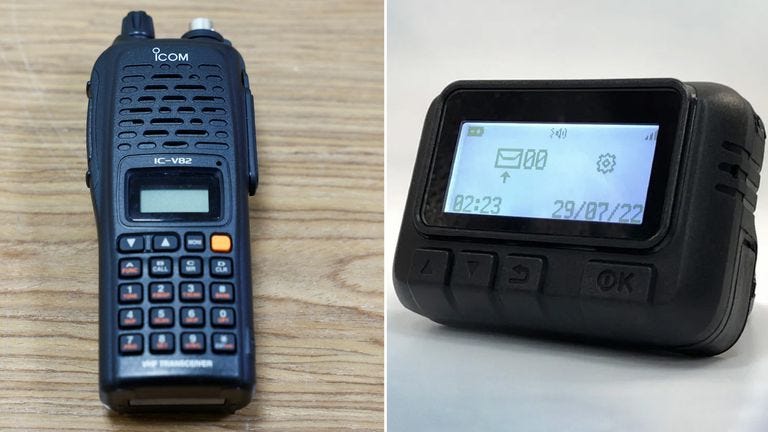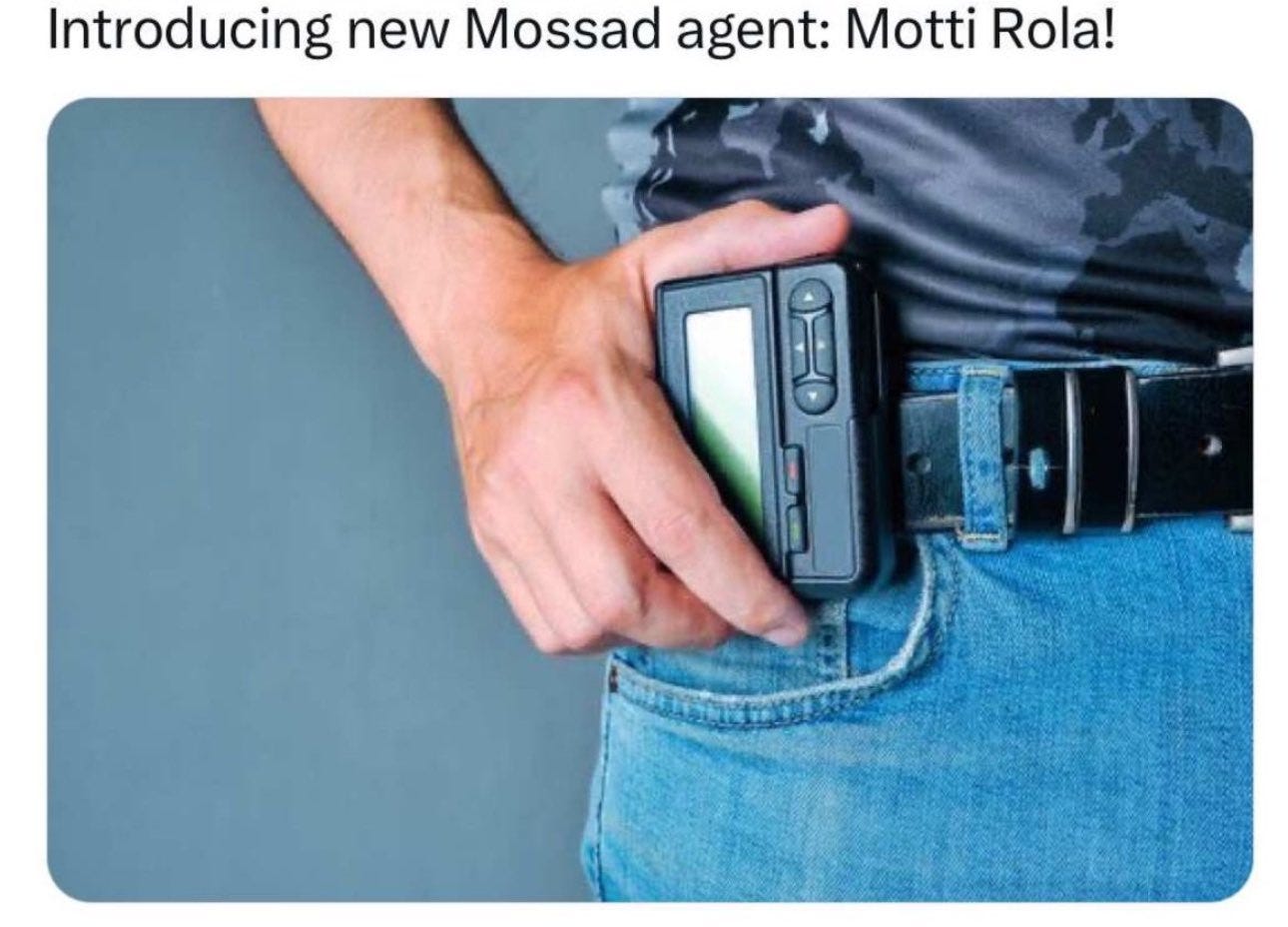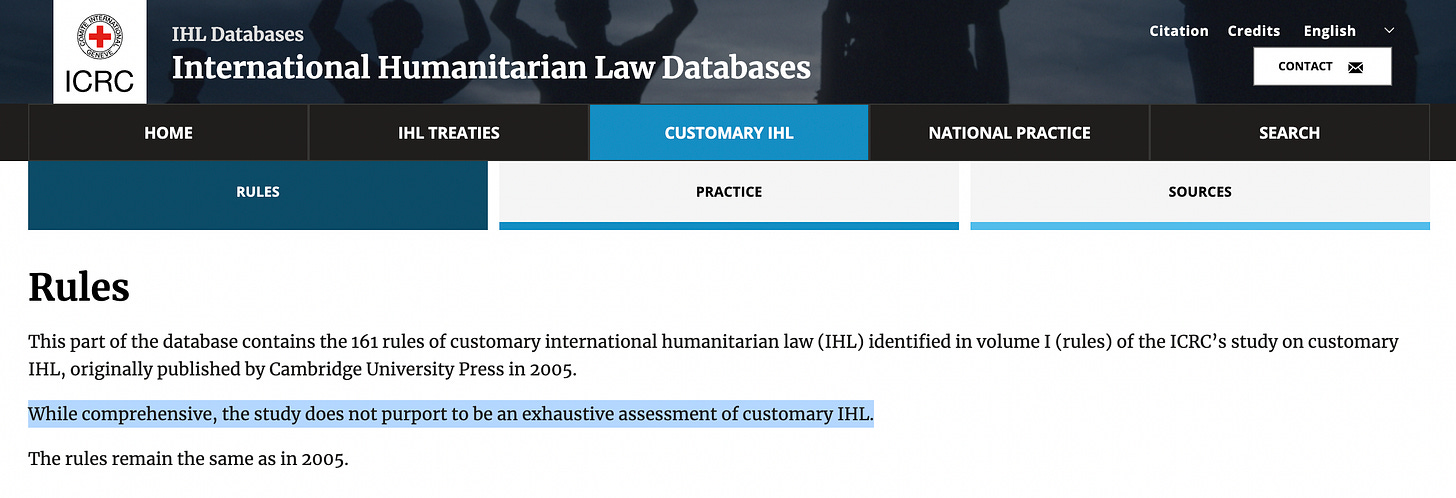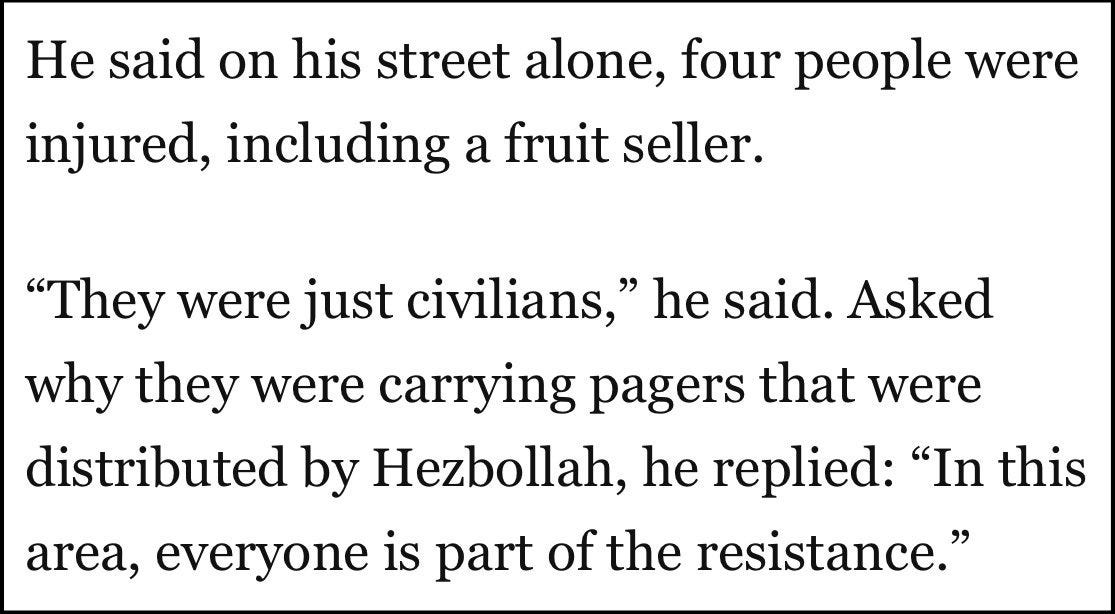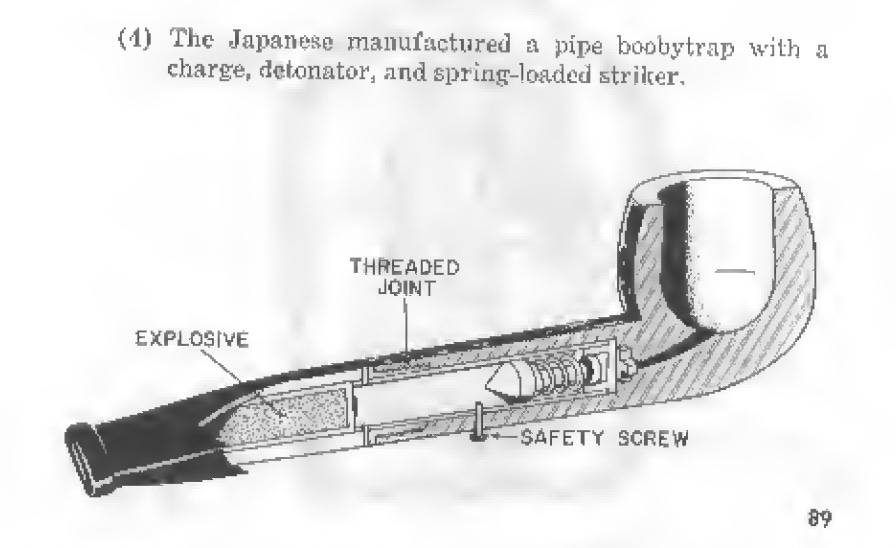Using and Abusing International Law
Or, how a large Reddit community decided to use international law to support terrorists
As I write this, the world continues to unravel the effects of the (likely, but unconfirmed) Israeli operation targeting Hezbollah communication devices. Dozens of Hezbollah members have died, hundreds or even thousands have been seriously wounded, and thousands are newly appreciating the reach and capabilities of Israeli defensive operations.
Amidst these events, a major Reddit community with over 3 million subscribers known as “r/WhitePeopleTwitter” has decided to ban anyone defending this (presumably) Israeli operation against Hezbollah. And they’ve decided to do it, astoundingly, by pointing to international law.
They are, equally astoundingly, doing so on a post featuring a tweet (Xeet?) by Rep. Alexandria Ocasio-Cortez, which wrongly claims that this operation violated international law. Nothing demonstrates better the brokenness of the discourse around Israel than this, and the double standards applied to the world’s only Jewish state.
How we got here is a question outside the scope of this post. But the abuse of international law by these folks is worth noting and discussing, as is what they are implicitly backing by this abuse of the law.
What Happened?
Those of you who are living under a rock (or perhaps who lack pagers) may be excused for missing the events of the past few days. To put it succinctly, Hezbollah and Israel have been fighting a quasi-war since October 8. Hezbollah is a genocidal organization, designated as a terrorist group by the US and European Union. It makes no secret of its antisemitism (calling Jews “a lesion on the forehead of history”) or its goal of destroying Israel (saying “the elimination of Israel” is “the interest of the entire Muslim world and the entire Arab world”).
Hezbollah, which watched Hamas’s massacres and rapes of Israeli civilians on October 7, decided to join Hamas’s operation on October 8 by firing rockets and explosive drones at Israel on a near-daily basis. To date, Hezbollah has fired over 8,000 missiles at Israel, and hundreds more drones, displacing tens of thousands of Israelis for the past 11 months. In response, Israel has launched airstrikes on Hezbollah that have failed to deter Hezbollah thus far. The airstrikes and other strikes have killed over 470 Hezbollah members, including top Hezbollah leaders like Fuad Shukr (with a $5 million bounty on his head by the U.S.) and Ibrahim Aqil (with a $7 million bounty on his head by the U.S.). But they have, thus far, failed to deter Hezbollah.
It seems that a few days ago, Israel decided to try a new tactic. It appears to have placed shaped explosives in thousands of pagers and walkie-talkies being sent to Hezbollah. These pagers were specifically made for Hezbollah (these were not the pagers used by civilians, like doctors), and Hezbollah was still distributing them to its operatives right when the attack occurred. This plot was likely meant to be kept in Israel’s back pocket until a war with Hezbollah, so that Israel could disrupt Hezbollah communications and operations in the opening phase of a war. Fearing discovery, however, Israel appears to have set the explosives off all at once, killing dozens of Hezbollah operatives and wounding thousands of others. The attacks spawned a lot of commentary, and also plenty of memes.
Nevertheless, the operation begs the question: what international law governs this kind of operation, and was it followed?
The Law, According to AOC and r/WhitePeopleTwitter
The outrage from many, particularly those who happen to have been silent on October 7 (like this “journalist” engaging in antisemitic Holocaust inversion, whose only comment after 10/7 came on October 9…condemning Israel’s response), has been palpable. AOC’s tweet claims that it “unequivocally violates international law”. And r/WhitePeopleTwitter claims that defending the attack is “defending war crimes”. How did we get here?
If you’re wondering what they linked to, it is this analysis of “Customary International Humanitarian Law” (shortened to Customary IHL). These “customs” are “laws” in the sense that they’re broad principles drawn from specific treaties and from how countries act or restrain themselves. If every country independently writes, in its military manuals, that attacking cats is a war crime, that could be considered a “customary” practice. Separately, if a variety of treaties with a wide spread cover and forbid attacks on cats, then that also becomes a “customary” practice. What’s important, though, is that these rules as laid out on that website are not law, and there is plenty of disagreement about what constitutes “customary IHL”. As the ICRC puts it:
The link itself relates to customary practice on the use of “booby traps” in war. The rules are drawn primarily from the “Convention on Certain Conventional Weapons”, and the amendments and protocols added to it. If you thought that this treaty was adopted worldwide, you’d be wrong; there are only about 125 state parties, out of over 190 states. Only 107 have signed onto Protocol II specifically. Nevertheless, we know that the law applies to Israel, which is a party to the treaty and to Protocol II, which covers the use of booby traps specifically (notably, the Palestinian leadership has refused to sign onto this Protocol and is not bound by it). The treaty text can be found here, with the English translation from page 29 to 47 of the PDF.
The treaty is especially concerned with mines and minefields, but covers a variety of “booby traps”. It defines a “booby trap” as a device designed to kill or injure someone who performs an apparently safe act, or who approaches or disturbs an apparently harmless object. This is a bit imprecise; someone carrying a pager around is not approaching a harmless object, and the device isn’t triggered by the person performing a safe act (it was remotely triggered). The better definition is for “other devices”, which the treaty defines in Article 2(5) as “manually-emplaced munitions and devices…designed to kill, injure, or damage which are actuated manually, by remote control or automatically after a lapse of time.” Importantly, the treaty also defines a “military objective” at Article 2(6), meaning anything that “by its nature, location, purpose, or use makes an effective military contribution to military action and whose total or partial destruction, capture or neutralization, in the circumstances ruling at the time, offers a definite military advantage.” A “civilian objective” is anything that isn’t a military objective.
There are only a few relevant provisions to the use of “booby traps” or “other devices” here that could possibly apply. So I won’t spend time dwelling on whether these were in violation of, for example, Article 3(5), which prohibits a device designed to detonate when it is detected by a commonly available mine detector. That’s just not relevant here.
The most important provisions that critics of the Israeli operation would point to are likely:
Article 3(7): Forbidding the use of these devices in a way “direct[ed]” at “the civilian population” or “individual civilians or civilian objects.”
Article 3(8): The use of devices in an “indiscriminate” way, meaning “not on, or directed against, a military objective,” or in a way that “cannot be directed at a specific military objective,” or that would cause “incidental loss of civilian life, injury to civilians, damage to civilian objects, or a combination thereof, which would be excessive in relation to the concrete and direct military advantage anticipated.”
Article 3(11): Providing for “effective advance warning” for devices that “may affect the civilian population,” unless “circumstances do not permit.”
Article 7(2): Prohibiting “other devices in the form of apparently harmless portable objects which are specifically designed and constructed to contain explosive material.”
The customary rule that r/WhitePeopleTwitter linked to, of course, is far less specific. It simply says that “The use of booby-traps which are in any way attached to or associated with objects or persons entitled to special protection under international humanitarian law or with objects that are likely to attract civilians is prohibited.”
So now that we know the law, let’s talk about each provision.
Applying the Law to Israel’s Operation
Assuming, for the sake of argument, that this treaty applies to this specific operation and that the pagers were indeed constructed as described with a shaped explosive, the question is next how the law applies to the operation.
At the outset, we can probably immediately discard Article 3(7). The operation clearly targeted pagers distributed and used specifically by Hezbollah, and not by the civilian population, meaning it was clearly directed at enemy military forces and not at the civilian population.
The next question is Article 3(8). Was this indiscriminate? At the outset, it’s clear the operation was targeted at a military objective: Hezbollah’s members. We then need to consider whether the harm to civilians would be “excessive” in relation to the military advantage. Thus far, we know that (despite Hezbollah attempts to mask its true losses) the vast majority of the deaths have been Hezbollah members. There have been incidents of civilian death by pure bad luck, like a young girl holding her Hezbollah father’s pager at the precisely worst moment. Some have described the deaths of “children” in other instances, though it’s worth taking this with a grain of salt, given that some of these “children” are like 16-year-old Abd Al-Manaim, a child soldier used by Hezbollah.
There has been amusing confirmation of the fact that those hit are largely Hezbollah members. One Twitter user, for example, flagged a fascinating portion of one Washington Post article discussing the pager operation:
In short, locals are telling reporters that those harmed are “civilians” by reflex, but when asked why civilians would have Hezbollah pagers, the witnesses say everyone is part of “the resistance”, i.e. Hezbollah.
While the events harming innocents are awful, the legal question is not about whether the operation avoided every civilian; it is about whether the civilian harm is “excessive” in relation to the military advantage. When the death toll appears to be evenly matched at worst, and likely heavily Hezbollah at best, the civilian harm cannot be considered “excessive”. This sounds callous to many, but the problem here is the reality of war: Hezbollah, like many terrorist groups, hides among civilians, and that has to be taken into account in any operation. Most wars kill or injure 9 civilians for every 1 enemy combatant; Israel’s operation may have flipped that ratio based on reporting thus far, though only time will tell. If Hezbollah fought in the open, there would likely be zero civilian deaths, and no need for such a targeted pager operation. Of course, Hezbollah knows that, and wouldn’t dare leave the “protection” afforded by human shields. The alternative would be to do nothing, because it is unlikely that any operation could more precisely target Hezbollah, and Israel cannot do nothing while facing a threat from a genocidal terrorist organization firing rockets at Israeli civilians.
Article 3(11) is covered by the above as well. Israel cannot possibly provide “advance warning” to civilians without them revealing to Hezbollah that the pagers are targeting them. That is why the “unless circumstances do not permit” language is included in that provision.
The customary rule discussed above is likewise easy to discard. The rule relates to “The use of booby-traps which are in any way attached to or associated with objects or persons entitled to special protection under international humanitarian law or with objects that are likely to attract civilians.” The pagers were attached to Hezbollah targets, who are not entitled to any special protection. Nor are pagers distributed specifically to Hezbollah members “likely to attract civilians”.
The implication of r/WhitePeopleTwitter using that rule, however, is that they think Hezbollah terrorists are “entitled to special protection under international humanitarian law”, which would be absurd. The alternative is that they think pagers distributed to Hezbollah terrorists are “likely to attract civilians”, which would be equally absurd. Either they think Hezbollah terrorists are entitled to special protection under international law, or they are ignoring the events themselves, since the pagers are designed to attract their owners, the Hezbollah terrorists. Either way, they are using this rule to allege that Hezbollah terrorists deserve some protection, which is appalling in the extreme.
What About Article 7(2)?
The strongest argument that could be made, but which r/WhitePeopleTwitter did not make by linking to that page, is that Article 7(2) applies and prohibits this type of operation because it prohibits “other devices in the form of apparently harmless portable objects which are specifically designed and constructed to contain explosive material.” At a first glance, this would seem to apply here. Pagers are “apparently harmless portable objects”, and here they appear to have been “specifically designed and constructed to contain explosive material.”
There’s only one problem with this: the context.
This is where the meat of legal discussion actually happens. The question here is incredibly granular, can be reasonably debated, and also is probably of the least significance, since a “violation” of this sort is likely to be ignored by most states. Nevertheless, let’s dig in by breaking it down.
The Crux: “other devices in the form of apparently harmless portable objects”
Having already explained that the pagers are likely “other devices”, they fall within this part. They are also in the form of apparently harmless portable objects, i.e. pagers. The big issue with applying this to the alleged Israeli operation is that the pagers were not “in the form of” apparently harmless portable objects. The question is whether this prohibition is about forbidding states from mocking up explosives that look like portable objects, like making an explosive that is designed to look like a pager, versus making a pager that has an explosive embedded inside. The U.S. Department of Defense’s Law of War Manual says that “This prohibition relates to booby-traps manufactured to resemble items, such as watches, personal audio players, cameras, toys, and the like.” The idea is to prevent “production of large quantities of dangerous objects that can be scattered around and are likely to be attractive to civilians, especially children.”

The issue here, of course, is that the pagers were specifically targeted to provide to Hezbollah operatives, not the sorts of objects that are picked up by random civilians, and were made specifically to be used rather than to “resemble” items. They also were not designed to be triggered haphazardly by anyone who picked them up. The distinction is important, because the treaty could be interpreted as prohibiting less or more. The “more” interpretation would be that it prohibits the use of explosives inside any portable device, like a camera, which might be picked up and carried for weeks by civilians and detonated when, for example, a signal is sent to the camera. The “less” interpretation, however, is that it prohibits making a booby trap that looks like a camera, which might detonate when a civilian presses the clicker for the first time.
There is also a critical note here on what the treaty seeks to prevent: if it is meant to prevent civilian harm, does that mean all portable objects carrying explosive materials are prohibited? Or is it only those that are likely to be used by civilians? For example, consider a “booby trapped” secured wallet, which complies for the sake of argument with all other provisions of the treaty. The wallet, in this hypothetical, is used only by terrorist group operatives who need to secure their various identifications and cards using organizational funds. Operatives are instructed to carry it around at all times, and not to leave it near anyone who might steal it and use the cards within. Is this the type of device that the treaty intends to cover? That seems unlikely.
The U.S. DoD Law of War Manual, on page 398 in the footnotes, provides a helpful example of what the treaty is likely intended to cover. During World War II, Japanese forces manufactured a tobacco pipe booby trap, which detonated when the pipe was used. You can see an illustration here, on page 88 of the PDF. Civilians are certainly likely to pick up a tobacco pipe, which is not a uniquely military-distributed device, and the Japanese devices were not specifically handed out to Allied forces. Nor were they necessarily required to be kept by Allied forces; a nonsmoking soldier might pick one up and give it, as a gift, to a civilian operating behind Allied lines, or a nurse, or so on.
This is particularly relevant because the objects must be “apparently harmless”. Does this mean that they must appear to be harmless objects to carry around? Or does it mean they must be objects that are not used to harm enemy targets? In legal parlance, does it prohibit booby-trapping only objects that are “dual-use” and might be picked up and used freely by civilians like tobacco pipes (in which case this operation might be legal, since these pagers were for Hezbollah operatives), or does it cover booby-trapping objects that appear harmless even if they’re specifically used by Hezbollah operatives, like Hezbollah-issued gear (in which case this operation might be illegal)? Is the treaty meant to cover materials specifically issued to enemy military forces if they appear harmless? That seems less likely. It seems hard to argue that booby-trapping an enemy’s communications structure to disrupt command and control is what is meant by a treaty that seeks to prevent civilians picking up or stepping on booby traps and mines.
This pager operation was about pagers carried by Hezbollah operatives and triggered remotely after the Hezbollah operatives were “prompted” to pick them up by a ping. These are not the types of devices that are typically left laying around by Hezbollah operatives in the middle of the day, which is when they were detonated. The pagers are specifically assigned a number for use by a Hezbollah operative, and cannot just be handed out to random civilians. It seems unlikely this is the type of device intended to be covered by the treaty.
Where Does That Leave Us?
The first and most important question is: does any of this matter? Is anyone seriously going to claim that they’re incredibly concerned by this maybe illegal act targeting a genocidal terrorist group’s operatives specifically and with great precision? Of course, some are upset, but it seems more likely they’re upset because this helped Israel; their concerns would likely be near-zero if this tactic was employed against ISIS, for example.
The second question is: how clear is a potential violation of international law? As I’ve laid out above, not very. There are many different issues with interpretation, intent, and how the treaty applies. I haven’t even gotten into other questions, like whether this applies in the context of an attack on a non-state actor outside of a fully-active war (that question revolves around whether this constitutes an “armed conflict”). But given the details, is it justified to use international law to protect Hezbollah operatives from strikes specifically targeting them?
That is the moral question, going beyond the law, and that is where people like AOC or the moderators at a major Reddit community are really missing the point. The legal question is unclear, but the morality of targeting genocidal terrorist group members specifically in this way, designed to use shaped explosives to kill members who are carrying around these pagers and unlikely to hand them off to random civilians (or leave them lying around in the middle of the day, when they likely need to use them), is unquestionable. To abuse unclear law to defend Hezbollah operatives is astounding. Nevertheless, that seems to be the world we live in. Shame, that.


